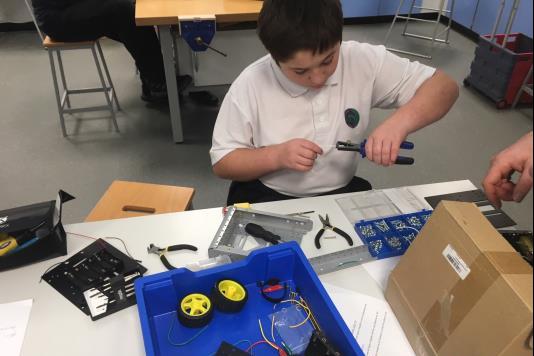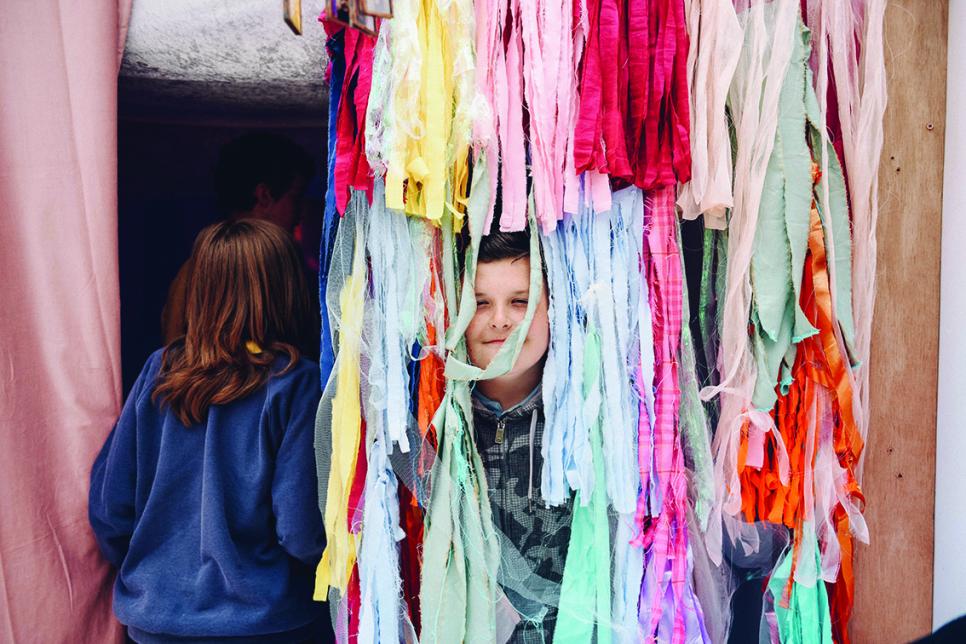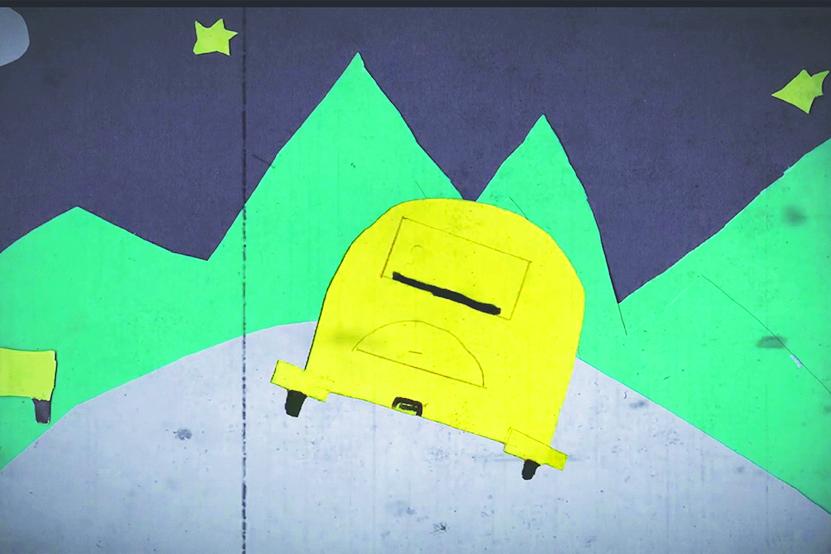North Wales based creative digital practitioners, Rob Spaull and Charles Gershom came on board to work with the staff and pupils to develop a creative project which would give the children the opportunity to learn and developing using the five creative habits of mind (imagination, inquisitiveness, discipline, persistence and collaboration), which underpin the pedagogy of the Lead Creative Schools Scheme. The project involved pupils making a ‘useful robot’ for the school using skills such as projection mapping, 3D modelling and printing and making music.
Jon Goodwin, teacher and project coordinator at Ysgol y Gogarth, which is also a pioneer school for the new 2020 curriculum, says the Lead Creative Schools Scheme is very well aligned with the new curriculum, as well as the school’s current improvement priorities. However, for him, the biggest benefit has been seeing the pupils become more engaged with learning by building up their confidence and independence and teaching them essential life skills.
Mr. Goodwin explains why it had such a positive impact and how they hope to continue this approach to learning moving forward.
"Being part of this scheme totally transformed the learning experience of the pupils involved, and from a professional point of view, allowed us to explore new ways of teaching and develop our skill sets as teachers. The creative practitioners, Rob and Charles, were such an inspiration. They were very pupil led, and continuously adapted their style of teaching depending on the needs of the pupils. For example, one of our pupils really struggled to concentrate and engage in any kind of learning - just getting him to sit for more than five minutes was a challenge. By the end of the project, this particular pupil was able to sit for over an hour and engage in the technical tasks at hand. This was a huge advancement for a child with such challenges.
"Being given access to external creative people and exposed to new ways of teaching has encouraged us to become more innovative and creative. Teachers who weren’t involved with the programme at the time have since had training in the new teaching methods and we’ve invested in new resources and equipment, which means the new approaches can be taken forward throughout the rest of the school for years to come."
Rob Spaull, who as well as going in to schools to work with teachers and pupils, has also been involved in training other creative practitioners involved in the scheme, is a big advocate of the programme.
"The Lead Creative Schools Scheme is about going into schools and motivating children to take control of their own learning and develop life-skills by using a range of creative techniques. The five creative habits of mind, which form the basis of the work carried out in the classroom, unlock creativity within the pupils, and allow them to achieve things they would never of dreamed they could achieve.
"The key is to work collaboratively with the pupils, and be adaptable to their needs. By working on ‘real’ projects, they are working slightly out of their comfort zone, but gain a sense of responsibility and achievement. It’s amazing to see them thrive on this, and watch them grow and develop as individuals.
"One child I was working with had very high levels of stress and anxiety, which involved him having big melt downs and not being able to engage with classroom activity. By the end of the project, he’d become so patient and polite, and was teaching other children within the class. None of us asked this of him; by being trusted and given responsibility he developed these skills for himself. This was a life changing moment for this particular pupil. It’s the unexpected outcomes like this, that make the scheme feel so magical and worthwhile."
It’s amazing to see them thrive on this, and watch them grow and develop as individuals.





